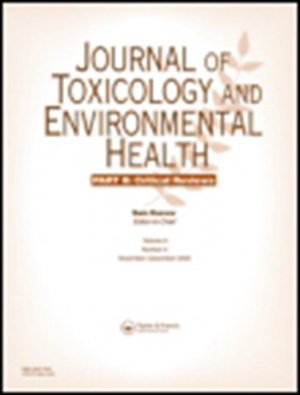综述了人体生物监测和暴露研究的现状、挑战和前景
IF 8.1
2区 医学
Q1 ENVIRONMENTAL SCIENCES
Journal of Toxicology and Environmental Health-Part B-Critical Reviews
Pub Date : 2019-08-18
DOI:10.1080/10937404.2019.1661588
引用次数: 41
摘要
人体生物监测(HB)是一种确定化学物质是否渗透到人体以及渗透到何种程度的过程,是量化人体暴露于污染物的有用工具。在营养和生理状态的情况下,HB在识别必需营养素的过量或缺乏方面起着关键作用。在污染物HB研究中,测量体液(血液、尿液和母乳)或组织(头发、指甲或牙齿)中的物质水平有助于识别潜在的健康风险或相关的不良影响。然而,即使在一些国家作为一种广泛的做法,大多数HB研究反映了在生命周期的单个时间点测量的单一化合物或混合物的暴露。另一方面,在一个人的一生中,与不同的物理、化学和社会压力源的接触以不同的强度、不同的时间和持续时间发生。此外,应激源和机体受体之间的相互作用导致整个生物系统的动态反应,包括蛋白质组、代谢组、转录组和内收组。考虑到这一点,暴露科学中出现了一个相对较新的观点,被定义为暴露体,它将传统的测量一次性暴露于一种或几种化学物质的做法扩展为一种解决整个生命周期中暴露于多种压力源的方法。随着暴露概念的提出,暴露科学发展到一个环境范围关联的视角,这可能与个体的良好健康或疾病状况(表型)表现出更强的关系。因此,这篇重要的综述集中在HB和暴露调查的当前进展,预测一些挑战,策略和未来需要考虑设计未来的调查。本文章由计算机程序翻译,如有差异,请以英文原文为准。
An overview of the current progress, challenges, and prospects of human biomonitoring and exposome studies
ABSTRACT Human Biomonitoring (HB), the process for determining whether and to what extent chemical substances penetrated our bodies, serves as a useful tool to quantify human exposure to pollutants. In cases of nutrition and physiologic status, HB plays a critical role in the identification of excess or deficiency of essential nutrients. In pollutant HB studies, levels of substances measured in body fluids (blood, urine, and breast milk) or tissues (hair, nails or teeth) aid in the identification of potential health risks or associated adverse effects. However, even as a widespread practice in several countries, most HB studies reflect exposure to a single compound or mixtures which are measured at a single time point in lifecycle. On the other hand, throughout an individual’s lifespan, the contact with different physical, chemical, and social stressors occurs at varying intensities, differing times and durations. Further, the interaction between stressors and body receptors leads to dynamic responses of the entire biological system including proteome, metabolome, transcriptome, and adductome. Bearing this in mind, a relatively new vision in exposure science, defined as the exposome, is postulated to expand the traditional practice of measuring a single exposure to one or few chemicals at one-time point to an approach that addresses measures of exposure to multiple stressors throughout the lifespan. With the exposome concept, the science of exposure advances to an Environment-Wide Association Perspective, which might exhibit a stronger relationship with good health or disease conditions for an individual (phenotype). Thus, this critical review focused on the current progress of HB and exposome investigations, anticipating some challenges, strategies, and future needs to be taken into account for designing future surveys.
求助全文
通过发布文献求助,成功后即可免费获取论文全文。
去求助
来源期刊
CiteScore
13.80
自引率
6.90%
发文量
13
审稿时长
>24 weeks
期刊介绍:
"Journal of Toxicology and Environmental Health: Part B - Critical Reviews" is an academic journal published by Taylor & Francis, focusing on the critical examination of research in the areas of environmental exposure and population health. With an ISSN identifier of 1093-7404, this journal has established itself as a significant source of scholarly content in the field of toxicology and environmental health.
Since its inception, the journal has published over 424 articles that have garnered 35,097 citations, reflecting its impact and relevance in the scientific community. Known for its comprehensive reviews, the journal also goes by the names "Critical Reviews" and "Journal of Toxicology & Environmental Health, Part B, Critical Reviews."
The journal's mission is to provide a platform for in-depth analysis and critical discussion of the latest findings in toxicology, environmental health, and related disciplines. By doing so, it contributes to the advancement of knowledge and understanding of the complex interactions between environmental factors and human health, aiding in the development of strategies to protect and improve public health.

 求助内容:
求助内容: 应助结果提醒方式:
应助结果提醒方式:


